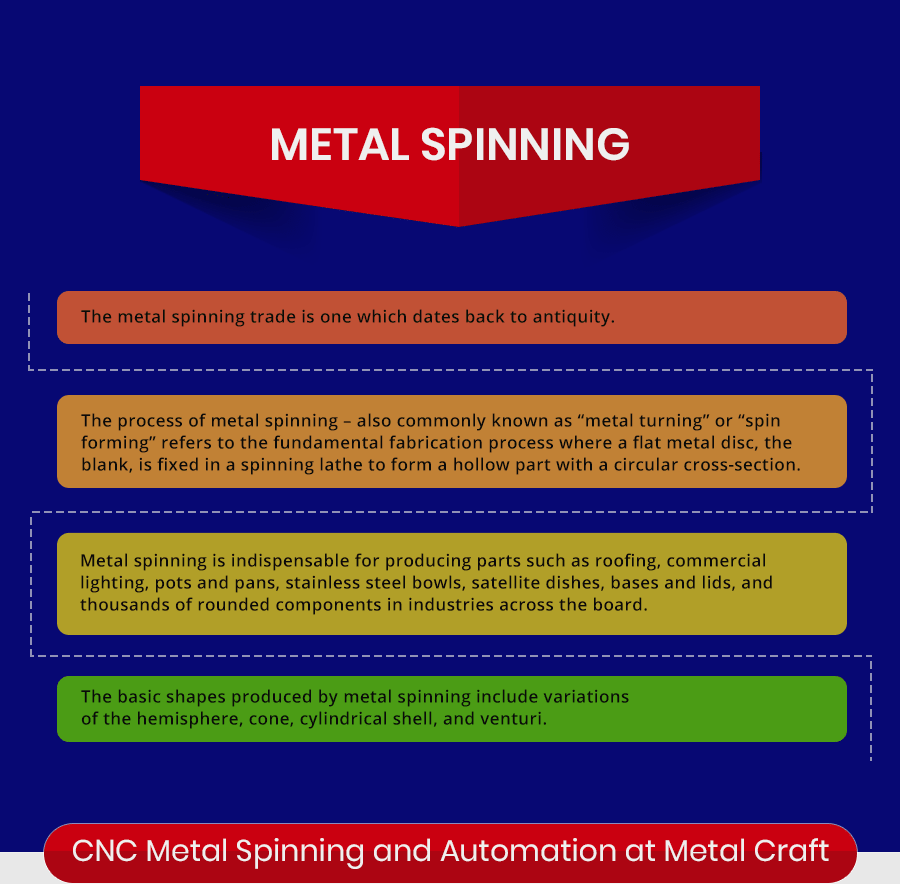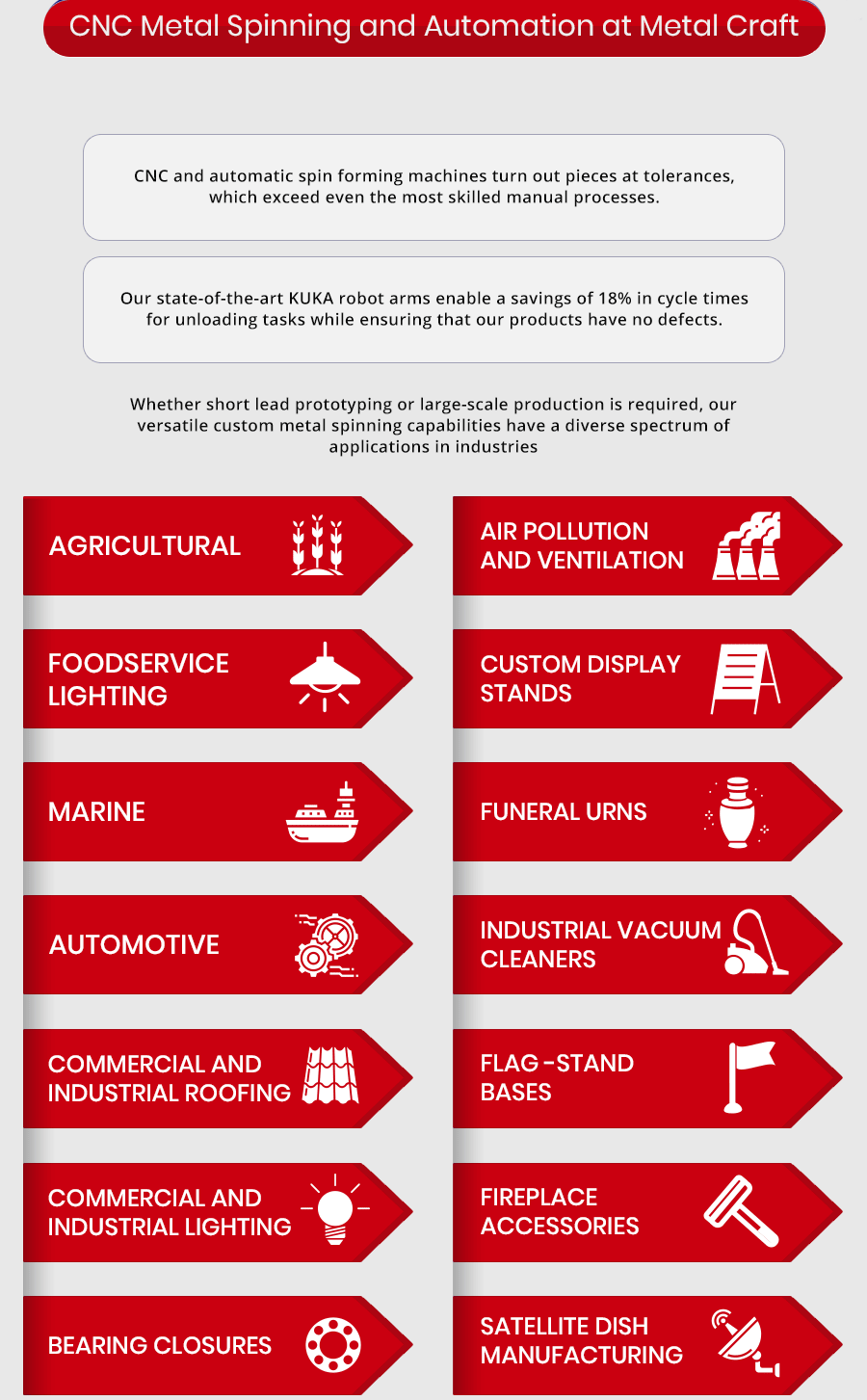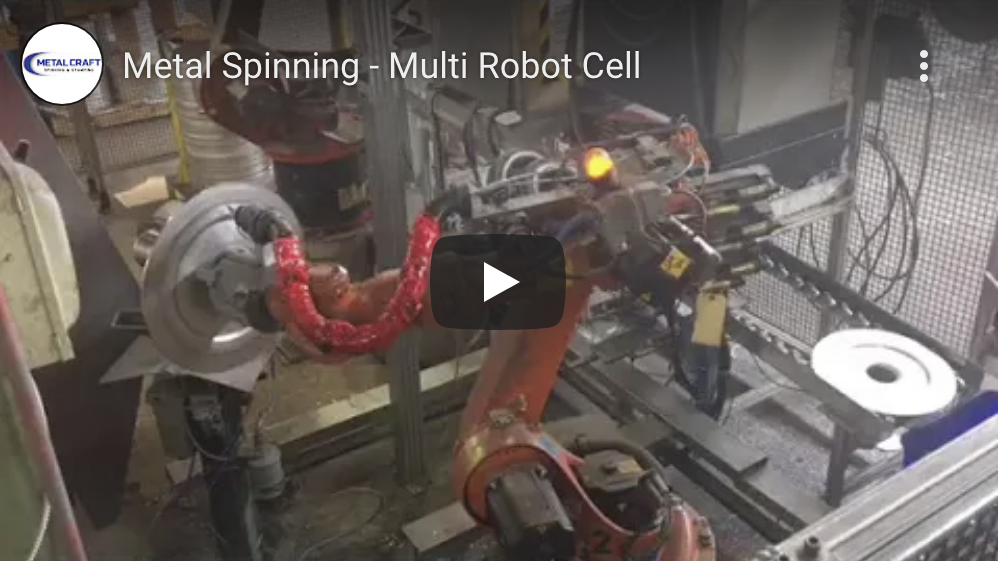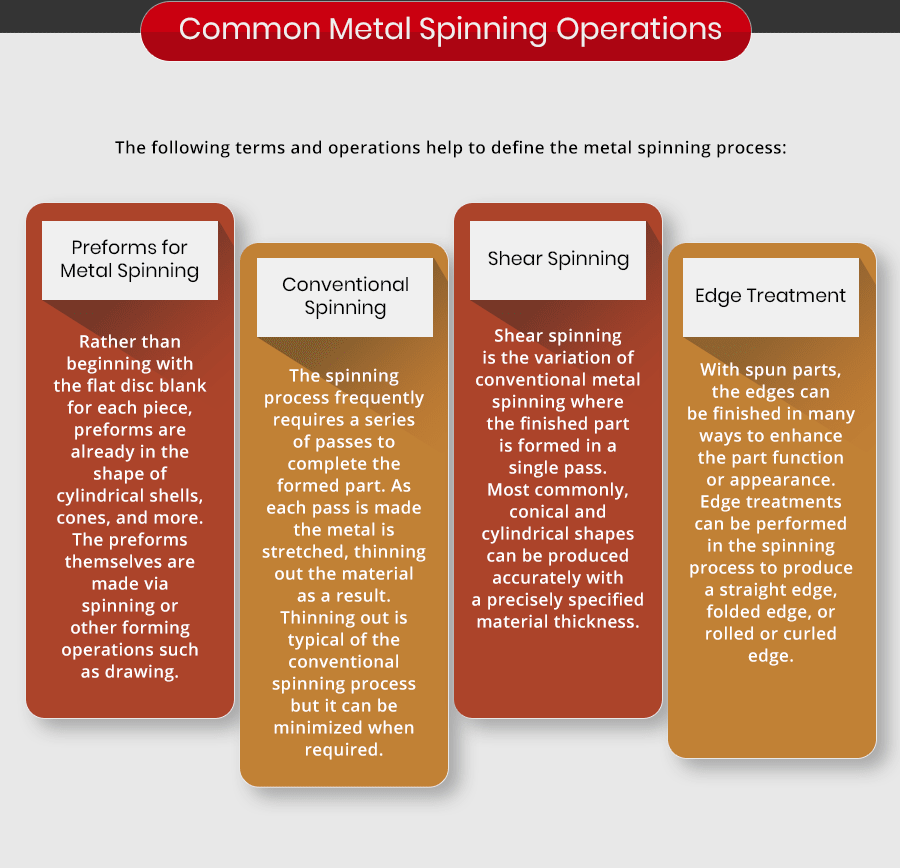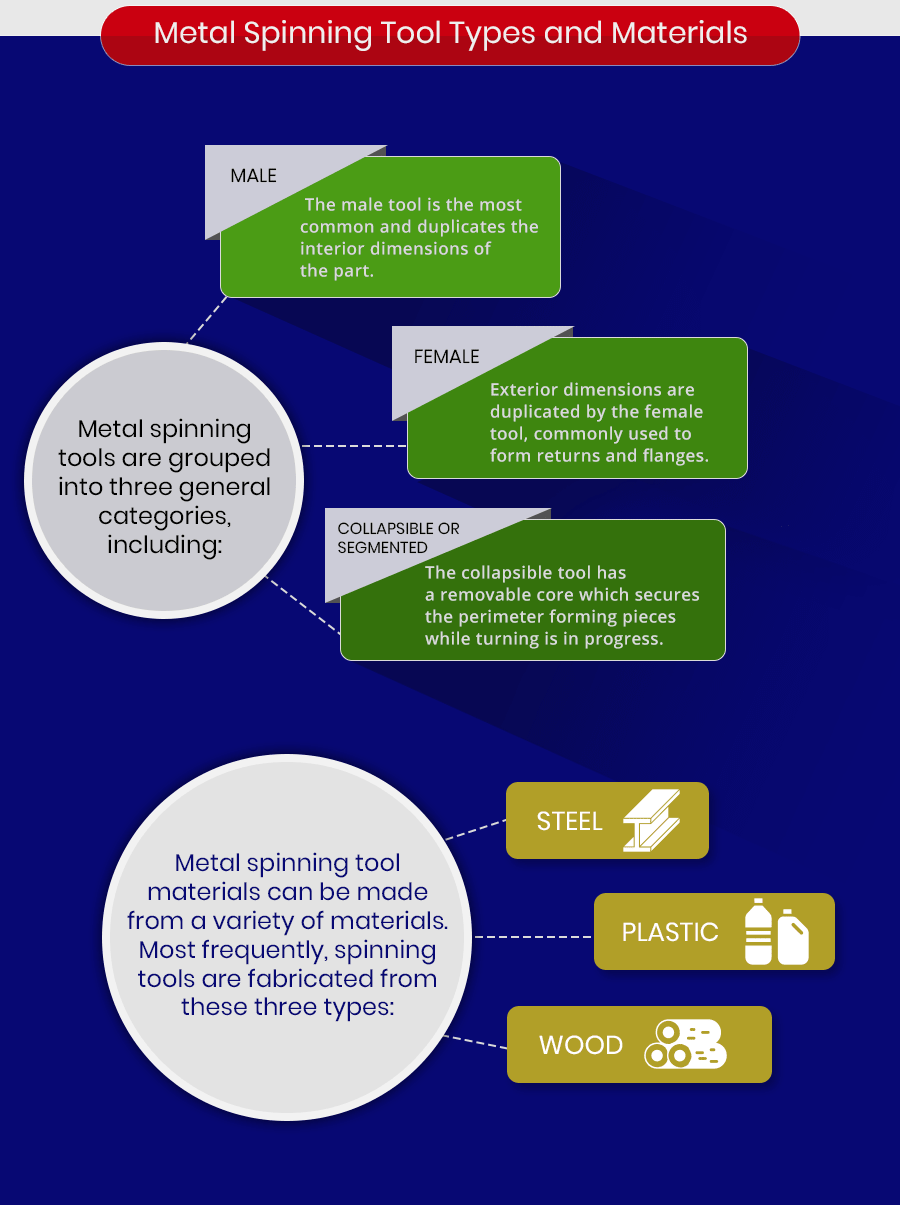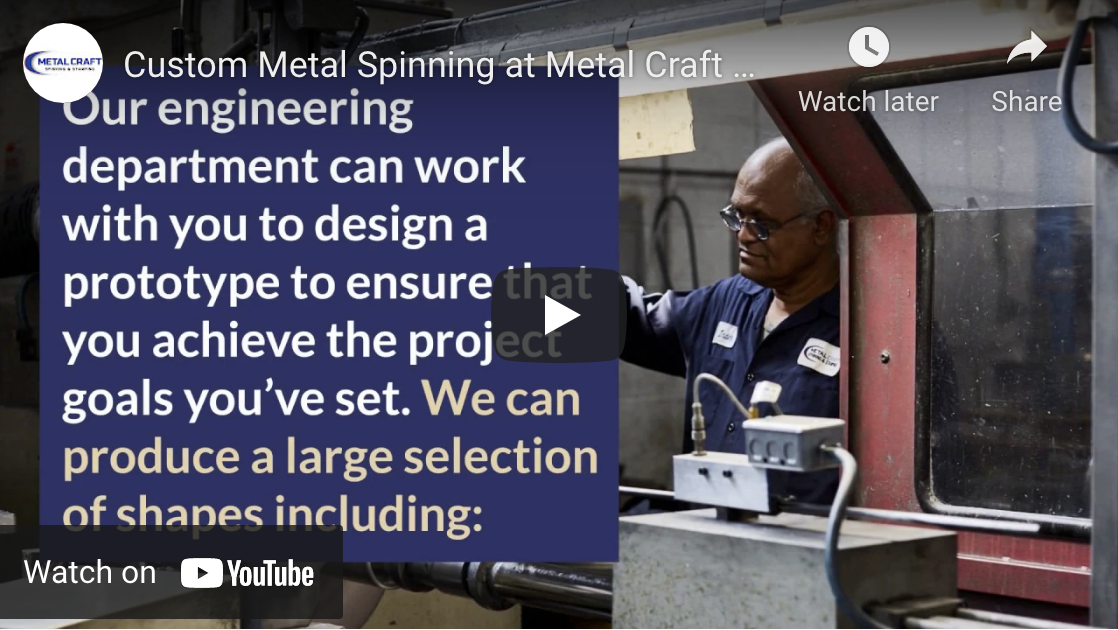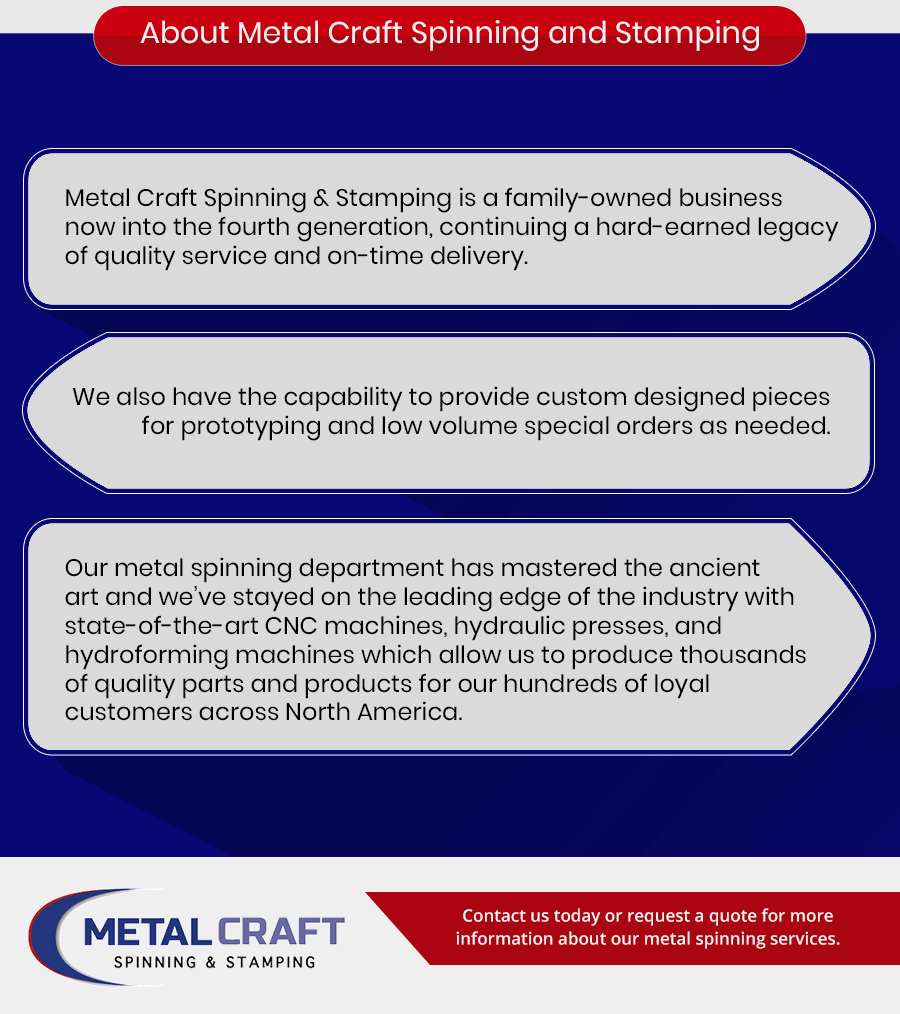Metal Spinning 101: A Guide
Advantages Of Metal Spinning
Advantages Of Metal Spinning
- Simple setup and quick changeover add up to short lead times for new parts
- Design changes with minimum expense
- Superior tensile strength within the finished material
- Dimensional stability with precise tolerances to 1000ths of an inch or 100ths of a millimeter
- Refined and strengthened grain structure
- High integrity and reliability for structural parts
The Metal Spinning Process
The Metal Spinning Process
In the basic set-up for a horizontal spinning lathe the tool (mandrel chuck) is mounted to the headstock of the lathe. A follower block (tail block) is mounted to the tailstock. A circular blank is then clamped to the tool by advancing the follower. The tool rest and pin provide a support system for the lever arms, a scissor-like apparatus. The lever arms apply pressure to the blank via a roller or other forming tool. The movement of the roller across the blank is called a pass. A series of passes, which ultimately forms the completed part, is achieved by repositioning the lever arms incrementally. Contact our Engineering department today to see how we can assist you in completing your project with metal spinning or metal stamping.
Materials we work with
Typical shapes that can be spun
Traditional Metal Spinning Processes Step-by-Step
- The mandrel chuck is mounted to the headstock, and the blank is fixed in place by advancing a follower block fixed to the tailstock of the lathe.
- A tool rest and pin combine as a support system for the lever arms, a scissor-like apparatus. In this configuration, the arms have sufficient leverage to apply adequate pressure to the blank against a roller or other forming tool.
- Each movement of the roller across the surface of the blank is called a pass. A series of passes is usually required to form the completed part. Multiple passes are achieved by adjusting the lever arms incrementally as the blank is reduced to its final finished form
Metal Craft’s Specialized Metal Spinning Services
Metal spinning in the past was restricted to soft metals and low volume production runs, but this is no longer the case. Today’s advanced metal turning techniques have opened the door to high-volume production with the most highly durable materials.
That makes custom metal spinning a very cost-effective option for rounded metal parts and products in industries across the board. At Metal Craft Spinning & Stamping, our hand and CNC lathe operations now serve industries including:
Industrial
We can work with aluminum, cold-rolled steel, and stainless steel, as well as copper and brass to fabricate your industrial projects.
Learn MoreArchitectural
Our custom metal spinning process excels for large architectural pieces suited to your specific needs and price requirements. Complete piece service can include finish and assembly to streamline turnover time.
Learn MoreInjection Molding
We manufacture stainless steel and cold rolled steel hoppers and fittings, which are essential for injection molding machines.
Learn MoreRoofing
The roofing industry has been relying on our services since 1969. Today, our automated robots produce roof drains for high volume orders with short lead times.
Learn MoreCommercial Lighting
Our experience with these aluminum products also goes back to 1969 and today we are experts in the manufacturing of lighting reflectors. Plating, metalizing, and anodizing services are also available.
Learn MoreHVAC
Indoor and outdoor ventilation systems require parts with the durability of cold rolled steel, aluminum, and stainless steel, especially in the commercial HVAC sector where extreme conditions are the rule. We combine CNC and hand lathes with our metal stamping capabilities to complete both high and low volume orders with minimal lead times.
Learn MoreSanitation
High traffic areas and public spaces often require large garbage can lids to optimize public sanitation. We can manufacture lids and bases in a wide range of sizes and materials, most commonly stainless or cold rolled steel.
Learn MoreMetal spinning in the past was restricted to soft metals and low volume production runs, but this is no longer the case. Today’s advanced metal turning techniques have opened the door to high-volume production with the most highly durable materials.
That makes custom metal spinning a very cost-effective option for rounded metal parts and products in industries across the board. At Metal Craft Spinning & Stamping, our hand and CNC lathe operations now serve industries including:
Metal Spinning Tolerance Guidelines
| Diameter of Finished Part | Commercial Applications | Special Applications |
|---|---|---|
| Up to 24″ in diameter (600 mm) | +/-0.015″ to 0.031″ (0.38 mm to 0.79 mm) | +/-0.001″ to 0.005″ (0.02 mm to 0.13 mm) |
| 25″ to 36″ in diameter (600 mm to 900 mm) | +/-0.031″ to 0.047″ (0.79 mm to 1.19 mm) | +/-0.010″ to 0.030″ (0.25 mm to 0.76 mm) |
| 37″ to 48″ in diameter (900 mm to 1200 mm) | +/- 0.047″ to 0.062″ (1.19 mm to 1.57 mm) | +/-0.010″ to 0.030″ (0.25 mm to 0.76 mm) |
| 49″ to 60″ in diameter (1200 mm to 1520 mm) * depending on the shape of part | +/- 0.062″ to 0.094″ (1.57 mm to 2.39 mm) | +/-0.015″ to 0.045″ (0.38 mm to 1.14 mm) |


;) Dished
Dished;) Domed
Domed;) Domed with flange
Domed with flange;) Flanged
Flanged;) Flanged and flued
Flanged and flued;) Flanged, dished and flued
Flanged, dished and flued;) Hemisphere
Hemisphere;) Semi-elliptical
Semi-elliptical;) Trumpet
Trumpet